Shane has had absolutely no formal training in art - he is 100% Self Taught! He lives in Seattle WA and his inspirations for Fantasy art include Frank Frazetta, H.R. Giger, Boris Vallejo, Escher and Jim Lee. Here is what he has to say about Fantasy art:
"I have a huge affinity for the fantasy art medium because fantasy art is the only medium which knows no rules and allows total creative freedom. I first feel in love with creating art and drawing ever since I first picked up a drawing pad and pencil when was 12 years old."
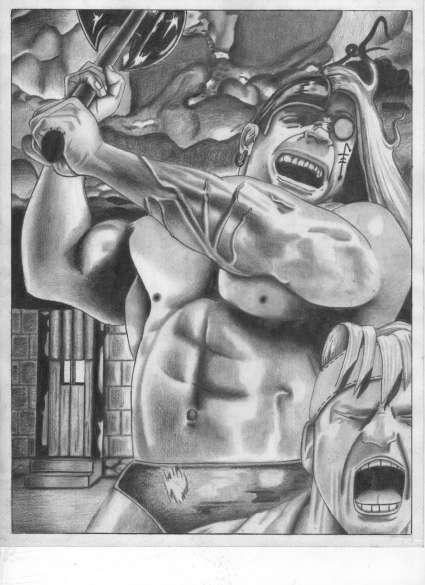
Shane has given us some insight into how he works and some great tips on techniques, pencil selection and smudging technique.
The main pencil that I use on literally ever drawing more than any other pencil is Sanford Eagle HB number two. Then after my illustration is completely penciled in I'll go over it again with a mechanical pencil. I like to fill my mechanical pencils with super high polymer 0.5 x 60 mm lead. I've discovered that this is the best tool to get very fine and dark lines, and the lead does not break easily. For dark shading I like to use pencils that are completely graphite, very thick, and are not surrounded by any wood. The brand I am very fond of is Pitt Graphite 8B made by Paber Castell. While I am shading I like to roll toilet paper very tightly and smudge the graphite in the areas that need more light. I'll also incorporate puddy eraser to pick up graphite in areas that are too dark. Then I take my number pencil again and apply a lot of pressure I'll go over the black areas drawing them even darker, I want to make sure my black areas are completely blackened in. Next while still using a number a number two pencil I'll go over the darker smudged areas again and shade out to light. However this time I will not smudge the graphite if I can help it. When I am shading I do not like there to be any visible lines. I like my shading to be a smooth transition from dark to light. So If I've done the smudging correctly there should be no visible lines at all when I shade out to light. The end result as you can see is a very smooth and soft effect.
Its very important to buy number two pencils that are surrounded with a very soft wood and that the wood it self hugs the graphite very tightly. The softer the wood is, and how tightly it hugs the graphite, will determine how fine of point can be sharpened on pencil. For that reason I've discovered that Sanford Eagle makes a very superior product to most other brands of pencils. Pencils that have very hard wood surrounding the graphite do not sharpen well and the graphite almost always breaks off inside the pencil.
As important as the pencil brand is, its equally important to spend an extra dollar and purchase a very good pencil sharpener. Cheap pencil sharpeners do not sharpen pencils very well so I purchase my pencil sharpeners at art supply stores and buy the most expensive brand. I like the kind that are aluminuim and that have two sharpening sizes built into them.
When I am erasing lines I like to use erasers that fit on the end of a pencil and I use cheap wide paint brushes to brush away the easer bit. I do not like to blow away eraser bits because sometimes I get tiny droplets of spit on the paper. Which messes up the shading process. Also I my nose and forehead a lot while I'm drawing. The oils from my face gets transfered to my hands, so for that reason I do not brush away eraser bits with my hands. I discovered that wide paint brush is the ideal tool to sweep away eraser bits. I purchase paint brushes from hardware stores and while I'm looking for cheap $2.00 brushes I'll also be looking for the most coarse sand paper that they have. If I am drawing sand or a very coarse surface I like to use a very soft lead and go over entire page with the sandpaper beneath it. However this technique cannot be implemented with a lot of pressure or the sandpaper will poke through the paper. Lastly on this subject I wear latex gloves while drawing so that I do not get oils from hands on my drawing and this also helps tp prevent smudging as well. I like to fill my gloves with a little cornstarch which prevents rashing and sweating inside the gloves.
He also has some great tips for us when it comes to building a library of images. Every artist should collect a large library of pictures and images. This becomes a great reference for future work and a great tool for practice. He has them all organized in three ring binders which is a great idea and you should start your collection too.
One of my other important tools for drawing is my refference resources. For the past 5 years I've been ripping out the pages of magazines and cataloguing them. I have been collecting images from magazines of the following: :
Men, Old Men, Women, Old women, Men & Women, Old Men and Women, Children, Men
Women Children, Men Women, and Children Groups of people, Buildings, Castles, Architecture,
Cars, Boats, Yachts, AirPlanes, Jets, Oceans, Skies, Flowers, Trees, forests, Mountains, Snow Covered Mountains, Space Ships, Planets, Galaxies, Comets, Black Holes
Basically after my wife is done with her magazines that she orders in the mail I go through all of them and rip them apart. I now have five huge three ring binders broken down into every catagory I can think of. For instance I not only just have just all the men together in one binder. I have each magazin broken down into headshots to full body poses. I also have the black & white pages broken down.
I like to draw from life as much as I can. So the perfect model is one that does not move and I have an entire catalogue full of models. I look for the correct model and pose that I am looking for and draw them. Its not important that my drawing looks exactly like the model unless I am drawing a portrait. So I do not have to worry about getting the nose exactly right, or the chine and lips identical to the model. I am only worry about getting the anatomy correct and fabric folding correct. The idea is not to copy, but to use it as a tool for refferencing. So I almost always change the wardrobe and the models face slightly in my drawing so that I cannot get sued by the magazine companies if the work I am doing is going to get published.
I also like to buy muscle magazine and totally rip them a part. Muscle magazines are perfect resources for studying anatomy and drawing it correctly. I would strongly recomend that every aspiring artist create their own catalogues. I would be happy to share mine with anybody that requires resource materials.
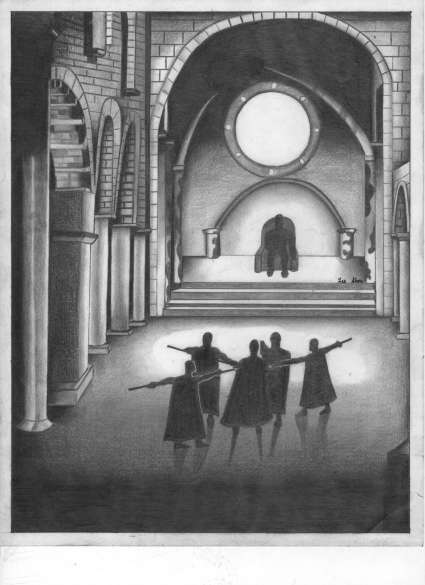
Click on the thumbnail to see larger versions of Shane's Fantasy Art:
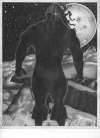 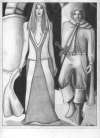 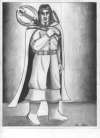 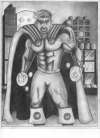 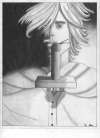
 Let's Continue on to lesson 23 Let's Continue on to lesson 23

Do you like making projects and exploring a variety of hobbies?
Sign up for my free newsletter. I give you regular updates on hobbies and projects you can make. it is totally free and I don't share your email with anybody.
|
![]()




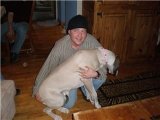 Submitted art work - This series of art works were submitted by Shane Lees. He has lots more art work you can check out by visiting his gallery at:
Submitted art work - This series of art works were submitted by Shane Lees. He has lots more art work you can check out by visiting his gallery at: 






